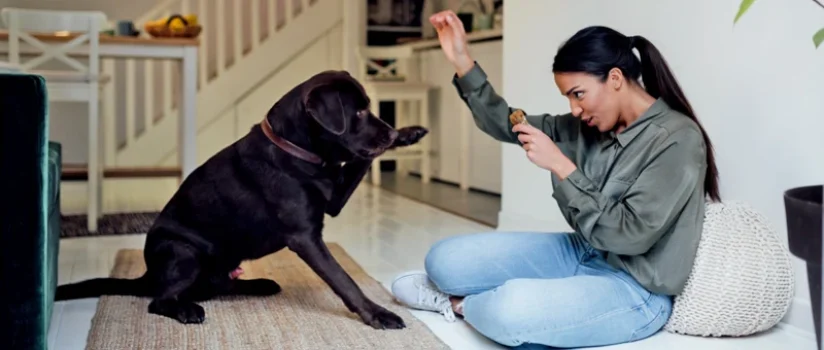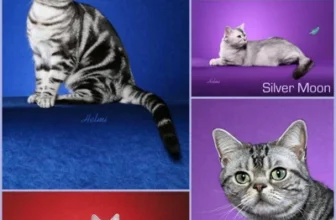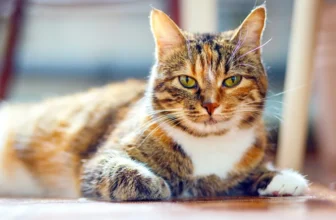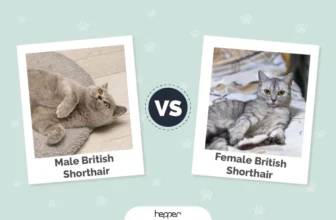As pet owners, we all want our furry companions to be happy and well-behaved. American Shorthairs are intelligent and affectionate cats that respond well to positive reinforcement training. One effective technique of positive reinforcement training is using treats as a reward to encourage desired behaviors. However, using treats in training can be tricky and requires careful consideration. In this article, we’ll explore the advantages of using positive reinforcement and treats, guide you in selecting the right treats for your American Shorthair, teach you different techniques for treat training, and provide helpful tips for avoiding common pitfalls. So let’s dive in and discover how to effectively use treats in positive reinforcement training for your American Shorthair!
Why Use Positive Reinforcement and Treats?
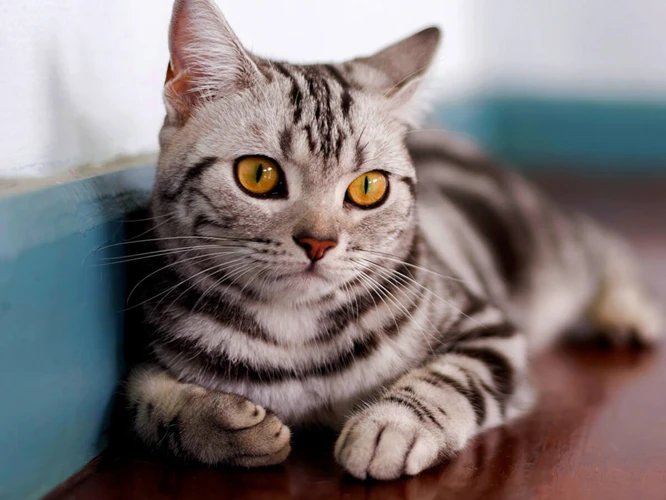
Positive reinforcement should be the go-to training method for pet owners who wish to use ethical and effective ways to train their furry friends. Using positive reinforcement and treats can strengthen the bond between you and your American Shorthair while stimulating their minds and keeping them obedient. In this section, we will explore the power of positive reinforcement and why treating your cat is the ideal way to improve behavior.
The Power of Positive Reinforcement
Positive reinforcement is a training technique that focuses on rewarding desirable behavior rather than punishing undesirable behavior. This technique is highly effective for training American Shorthairs as it encourages them to repeat positive behaviors and discourages negative behaviors. Studies have shown that positive reinforcement is a more effective and humane training method than punishment-based techniques.
In positive reinforcement training, treats play a crucial role as a reward. By rewarding your American Shorthair with a treat for displaying a desirable behavior, you can positively reinforce that behavior and increase the likelihood of it occurring again in the future.
It’s important to note that not all treats are created equal. When selecting treats for positive reinforcement training, it’s important to consider factors such as the nutritional value, size and texture of the treats, and their preparation and presentation. By choosing the right treats, you can help ensure that your American Shorthair is receiving a healthy and enjoyable reward.
One of the main benefits of positive reinforcement training is that it creates a positive and rewarding experience for both you and your American Shorthair. This can help strengthen the bond between you and your pet and make training sessions a fun and enjoyable experience. In fact, positive reinforcement training has been shown to not only improve behavior, but also reduce stress and anxiety in cats.
By using positive reinforcement techniques, you can train your American Shorthair to display a wide range of behaviors and commands. Whether you’re teaching your pet to use a scratching post or training them to respond to a particular command, positive reinforcement techniques can help ensure that your American Shorthair is learning in a positive and rewarding environment.
Positive reinforcement training is a highly effective and humane method of training American Shorthairs. By using treats as a reward and focusing on positive behaviors, you can create a positive and rewarding training experience that can help strengthen the bond between you and your pet. If you want to learn more about positive reinforcement training for American Shorthairs, check out our guide on the topic.
Treats as a Reward
Treats as a reward are an essential part of positive reinforcement training. When training your American Shorthair, treats can be used as a powerful tool to motivate good behavior and encourage the learning process. The key is to find the right treats that your cat responds to and to use them sparingly to maintain their effectiveness.
Here are some tips for using treats as a reward in American Shorthair positive reinforcement training using an internal link
- Choose healthy and nutritious treats that won’t cause weight gain or digestive issues.
- Limit the number of treats given during training sessions to prevent overfeeding and weight gain.
- Vary the type of treats given during training to maintain interest and avoid boredom.
- Make sure the treat size is appropriate for your cat’s mouth and ability to chew.
- Use treats as a way to reinforce positive behavior, not as a bribe for obedience.
- Give treats immediately after desired behavior is displayed to reinforce that specific behavior.
- Keep the treats hidden during training to prevent distraction and maintain focus.
- Use treats in conjunction with positive verbal reinforcement such as praise and petting.
By properly using treats as a reward in American Shorthair positive reinforcement training, you’ll be able to create a loving and trusting relationship with your cat. For more information on American Shorthair positive reinforcement training, check out our internal article . Additionally, you can read about how positive reinforcement training can benefit anxious cats in our internal article.
Selecting Treats for American Shorthair Training
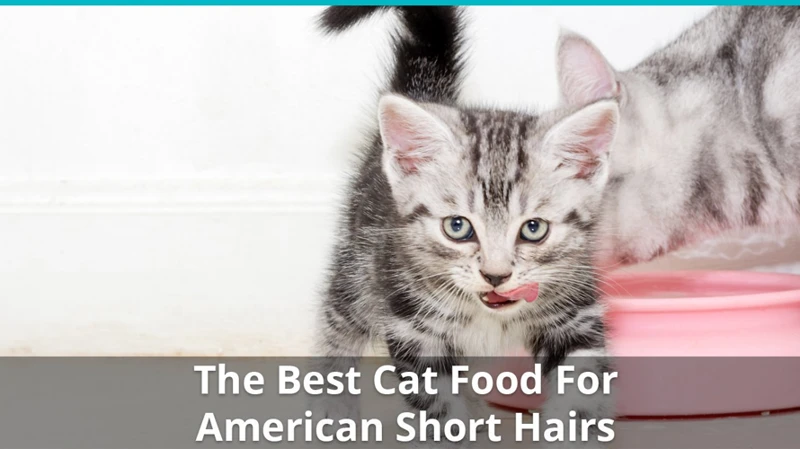
As a cat owner, choosing the right treats for American Shorthair training can be overwhelming. With so many options available, it can be tough to know where to start. However, selecting the appropriate treats for training is not only crucial for maintaining your cat’s interest and motivation but also for ensuring safe, healthy consumption. In this section, we will explore what to consider when picking treats for American Shorthair training, including nutritional value, treat size and texture, and preparation and presentation.
Nutritional Value
When selecting treats for American Shorthair training, it is important to consider the nutritional value of each option. Not all treats are created equal, and it is essential to choose high-quality, nutritious snacks that will benefit your cat’s diet as a whole.
Below is a table that outlines the nutritional values of common treat options for American Shorthairs:
| Treat Option | Calories per treat | Protein | Fat | Carbohydrates |
|---|---|---|---|---|
| Chicken breast (cooked, boneless) | 18 | 3 grams | 1 gram | 0 grams |
| Salmon (cooked, boneless) | 27 | 5 grams | 1 gram | 0 grams |
| Tuna (canned in water) | 9 | 2 grams | 0.5 grams | 0 grams |
| Freeze-dried shrimp | Approximately 1 calorie per shrimp | 1 gram per 4-5 shrimp | 0.5 grams per 4-5 shrimp | 0 grams |
| Commercial cat treats (varies by brand) | 2-3 calories per treat | ~1 gram | ~1 gram | ~1 gram |
As you can see, real, unprocessed meats like chicken and salmon are excellent options because they have minimal fat and carbohydrates and are high in protein. Tuna can also be a good choice for a low-calorie snack, but be sure to choose cans packed in water rather than oil. Freeze-dried shrimp is another high-protein option, but be aware of the calorie count, as it can quickly add up if you give your cat too many.
On the other hand, many commercial cat treats have high levels of carbohydrates and fillers that are not beneficial to your cat’s diet. Look for treats with real ingredients and minimal fillers or preservatives.
By choosing treats with high nutritional value, you can provide your American Shorthair with the essential nutrients they need to stay healthy while still using positive reinforcement to train them effectively.
Treat Size and Texture
When choosing treats for American Shorthair training, it’s important to pay attention to their size and texture. Treats that are too large or hard can pose a choking hazard for cats, while treats that are too small may not provide the necessary incentive for positive reinforcement.
Treat Size:
When it comes to size, you’ll want to choose treats that are small enough for your American Shorthair to easily consume in a single bite. Ideally, the treats should be no larger than a pea. You can also break larger treats into smaller pieces to ensure that they are an appropriate size.
Treat Texture:
In addition to size, the texture of treats is also important. Hard treats can be difficult for cats to chew and may lead to dental problems, so it’s best to choose soft or semi-soft treats. Treats that are too crumbly may also be difficult to work with, so opt for treats that hold their shape well.
Variety:
It’s also a good idea to offer a variety of different types of treats during your American Shorthair’s training sessions. This will help keep them engaged and interested, and prevent them from becoming bored or disinterested. Additionally, offering a variety of treats with different flavors and textures will help you determine what your cat likes best and tailor their training accordingly.
To sum up, treat size and texture play a crucial role in using treats for positive reinforcement training with American Shorthairs. Choosing treats that are the right size and texture, as well as offering a variety of different types, will help keep your cat motivated and engaged during training sessions.
Preparation and Presentation
When it comes to training American Shorthairs with treats, preparation and presentation play a key role in their effectiveness. Here are some tips to help make your treats more enticing for your furry friend:
Variety: Just like humans, cats can get bored with the same old treats. Mix things up by offering a variety of flavors and textures.
Size: Treats that are too large can be difficult for American Shorthairs to chew and also increase the likelihood of overfeeding and obesity. Stick to smaller treats that are easy to handle.
Freshness: Always make sure your treats are fresh. Stale treats can be unappetizing and may not motivate your cat as effectively.
To make your treats even more appealing, try some of these presentation techniques:
Training Pouch: A training pouch allows for easy access to treats during training sessions. Plus, your American Shorthair will associate the sound of opening the pouch with a potential treat, which can increase their excitement and motivation.
Interspersing: Rather than feeding treats one after the other, try splitting them up and offering them intermittently. This breaks up the routine and makes the training session more enjoyable for your cat.
Hand-Feeding: Your American Shorthair may enjoy the added interaction of being hand-fed treats. This also allows for a closer connection between you and your cat during training sessions.
By taking the time to prepare and present treats in an enticing way, you can increase the effectiveness of your positive reinforcement training with your American Shorthair.
| Preparation Tips | Presentation Techniques |
|---|---|
| Variety | Training Pouch |
| Size | Interspersing |
| Freshness | Hand-Feeding |
Techniques for Using Treats
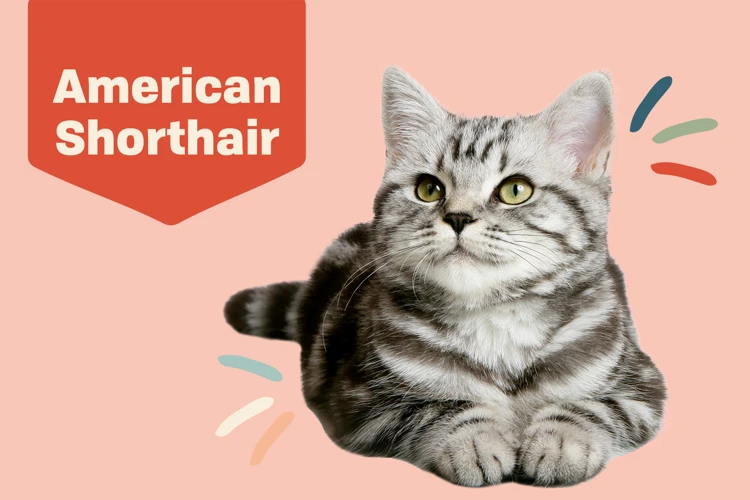
Using treats in positive reinforcement training can be an incredibly effective tool for teaching your American Shorthair new tricks and behaviors. However, it’s important to remember that not all techniques for using treats are created equal. Some methods may work better for certain cats than others, and it’s essential to select the right techniques to ensure success. In this section, we’ll explore a range of techniques that can be used for effectively using treats in positive reinforcement training for American Shorthairs, so you can select the best method for you and your furry friend. From capturing and shaping behaviors to luring and clicker training, we’ll cover a variety of different approaches that cater to different learning styles and temperaments.
Capturing and Shaping Behaviors
Capturing and shaping behaviors is a foundational technique in positive reinforcement training for American Shorthairs. This technique involves waiting for the cat to naturally display a desirable behavior and then immediately rewarding that behavior with a treat.
Here are the steps for capturing a behavior:
- Observe your American Shorthair and choose a behavior that occurs naturally with some frequency.
- When you see the behavior, quickly mark it with a verbal cue such as “Yes!” or by using a clicker if you’ve already trained your cat to associate the sound with rewards.
- Immediately give your cat a treat.
- Repeat these steps consistently until your American Shorthair begins to offer the behavior more regularly.
Once the cat starts performing the behavior more often, shaping can begin. Shaping involves gradually molding the behavior to become more complex or more specific.
Here are the steps for shaping a behavior:
- Start with the basic behavior that has been consistently captured and rewarded.
- Reward only those attempts at the behavior that more closely approximate the desired end goal.
- Gradually raise the bar for what earns a reward so that the behavior is refined.
- Repeat these steps until your American Shorthair is consistently performing the behavior according to your desired criteria.
When using capturing and shaping techniques, it’s important to be patient and consistent. You’ll also want to choose behaviors that are appropriate for your cat’s age, health, and ability level. With consistent practice, capturing and shaping behaviors can be a highly effective way to train your American Shorthair using positive reinforcement.
Target Training
Target training is one of the most effective ways to teach American Shorthairs new behaviors and tricks using treats and positive reinforcement. This technique involves teaching your cat to touch or interact with a specific target, such as a stick or a specific spot, by rewarding them with a treat each time they successfully do it.
Step-by-step guide to target training with treats:
- Choose a specific target that your cat can touch or interact with, such as a stick, a spot, or an object.
- Show your cat the target and encourage them to investigate it by placing the target close to their nose. When your cat interacts with the target, reward them with a treat and praise them with positive words or a petting.
- Repeat this process several times until your cat begins to consistently interact with the target.
- Gradually move the target further away from your cat, rewarding them each time they successfully touch or interact with it. Practice this until your cat can touch or interact with the target from a distance.
- Next, try using the target to teach your cat specific behaviors, such as jumping or going through hoops.
- When your cat successfully performs the behavior, reward them with a treat and praise them with positive words or a petting.
- Gradually increase the difficulty of the behavior and the distance of the target from your cat as they improve.
- Finally, practice the newly learned behavior regularly to reinforce it, and give your cat the chance to enjoy the training sessions as a fun and positive experience.
Remember to use small and chewable treats when target training, as American Shorthairs have small mouths and may choke on larger treats. With time and practice, target training with treats can help you teach your cat an array of impressive behaviors and tricks while building a strong bond and positive relationship with your feline friend.
Clicker Training
Clicker training is a highly effective technique that can help speed up the learning process for American Shorthairs. The clicker is a small handheld device that makes a distinct sound when pressed, which serves as a marker for the desired behavior. This sound helps the cat to associate the behavior with the reward that is coming.
How clicker training works:
- Introduce the clicker to the cat: First, let the cat hear the sound of the clicker a few times so that it becomes familiar with the sound.
- Pair the sound with a treat: As soon as the cat hears the sound, give it a treat so that it learns to associate the sound with the treat.
- Begin training: Use the clicker to mark the desired behavior as soon as the cat performs it. Follow it with a treat to reinforce the behavior.
Clicker training is particularly effective for shaping and capturing behaviors that are difficult to train with other methods. It can be used to train a wide range of behaviors such as jumping, sitting, walking on a leash, and more.
Benefits of clicker training:
- Accurate and timely feedback: The clicker provides immediate feedback to the cat, which helps it understand exactly what action is being rewarded.
- Clear communication: The sound of the clicker is always the same, which helps to avoid any confusion or misunderstanding between the owner and the cat.
- Positive association: Clicker training is a positive reinforcement technique, which promotes a strong bond between the owner and the cat.
- Entertainment: Clicker training is an engaging and fun activity for both the owner and the cat.
However, it is important to note that clicker training should be used in moderation to prevent over-reliance on treats and promote a balanced diet for the cat. Additionally, it should be used in combination with other positive reinforcement techniques for maximum effectiveness.
Luring
Luring is a training technique that involves using a treat to guide your American Shorthair into a desired position or behavior. This method can be particularly useful for teaching your cat new tricks or commands.
How to Lure Your American Shorthair
To begin, select a highly desirable treat that your cat will be willing to follow. Hold the treat in your hand and slowly move it towards the position or behavior you would like to teach. For example, if you are teaching your cat to sit, you would hold the treat just above their nose and move it upwards until their haunches lower to the ground.
As your cat follows the treat, praise them and give them the treat as a reward. Repeat this process multiple times until your cat begins to associate the desired behavior with the treat.
Common Mistakes to Avoid
While luring can be an effective training technique, it’s important to avoid certain mistakes that could hinder its success.
First, avoid physically forcing your cat into the desired position. This can cause your cat to become fearful or resistant to the training, ultimately leading to a lack of progress.
Additionally, be careful not to use the treat as a distraction from the correct behavior. Instead, only use the treat as a guide to get your cat into the correct position, then immediately reward them for performing the behavior correctly.
Lastly, be patient and consistent with your training. Remember, some cats may take longer to learn than others, so don’t become discouraged if your cat doesn’t immediately respond to the luring technique.
Tips for Successful Luring
| Tip | Description |
|---|---|
| Use high-value treats | Select treats your cat finds particularly enticing to increase their motivation to follow your guidance. |
| Start with simple behaviors | Begin with basic behaviors and gradually increase the difficulty as your cat becomes more comfortable with the luring technique. |
| Keep sessions short | Train in short sessions, no more than 10-15 minutes at a time, to keep your cat’s attention and avoid frustration. |
| Be consistent | Use the same verbal cue or hand signal each time you lure your cat into a behavior to reinforce the association between the cue and behavior. |
By following these tips and avoiding common mistakes, luring can be an effective technique for training your American Shorthair using treats and positive reinforcement.
Avoiding Pitfalls in Treat Training
As much as positive reinforcement training using treats can be an effective method, there are also potential pitfalls that trainers should keep in mind. Without the proper caution, using treats in training sessions can lead to negative outcomes such as overfeeding and dependence on treats. It’s important to be aware of these pitfalls and know how to avoid them. Let’s take a closer look at some of these concerns and how to navigate around them.
Overfeeding and Obesity
As with any type of training, it’s important to be mindful of potential negative consequences. When it comes to using treats as a reward in positive reinforcement training for American Shorthairs, one potential pitfall is overfeeding and obesity. While treats can be a useful tool in training, they should not make up a significant portion of the cat’s diet.
Why Overfeeding and Obesity Are a Concern
Overfeeding can lead to obesity, which is a serious health concern for cats. Obesity increases the risk of several health problems, including diabetes, arthritis, and liver disease. It can also shorten a cat’s lifespan. If a cat becomes dependent on treats for positive reinforcement, they may lose motivation for training when the treats are removed, making the training less effective in the long run.
How to Avoid Overfeeding and Obesity
To avoid overfeeding and obesity, it’s important to select treats that are nutritionally balanced and to use them sparingly. A good rule of thumb is to ensure that treats make up no more than 10% of the cat’s daily caloric intake.
To make sure you’re following this rule, you can consult the nutritional information on the treat packaging or consult with your veterinarian. It’s also important to adjust the cat’s regular meal portions if you are giving them treats regularly, to avoid giving them more calories than they need.
You can use an html table to create a visual representation of recommended treat portions:
| Cat’s Weight Range | Treat Portion |
|---|---|
| 5 lbs or less | 1-2 small treats |
| 6-10 lbs | 2-3 small treats |
| 11-15 lbs | 3-4 small treats or 1-2 larger treats |
| 16 lbs or more | 4-5 small treats or 2-3 larger treats |
In Conclusion
Using treats as a reward in positive reinforcement training for American Shorthairs can be effective and enjoyable for both the cat and the owner. However, it’s important to be mindful of potential negative consequences, such as overfeeding and obesity. By selecting treats carefully and using them in moderation, you can keep your cat healthy while still enjoying the benefits of treat-based training.
Dependence on Treats
It is crucial to remember that treats should not be the only form of positive reinforcement used in American Shorthair training. If treats become the sole motivator, your cat can develop a dependence on them and may refuse to perform a desired behavior without a treat. This can make training difficult and ultimately ineffective.
To avoid dependence on treats, it is important to gradually reduce the frequency of treat rewards over time. This can be done by slowly increasing the number of behaviors required before the treat is given or decreasing the amount of treats given each time the behavior is performed correctly.
Here are some tips to avoid dependence on treats:
- Use verbal praise, petting, or playing with toys instead of treats to reward good behavior.
- Vary the rewards used in training sessions to prevent boredom and keep your cat engaged.
- Avoid using treats for behaviors that your American Shorthair already knows how to perform consistently.
- Gradually reduce the frequency of treats used in training sessions and replace them with other forms of positive reinforcement.
By using treats as one of many forms of positive reinforcement, you can effectively train your American Shorthair without creating a dependence on treats. Remember to vary your rewards, gradually reduce treat usage, and use treats only as a supplement to other forms of positive reinforcement. This will help ensure that your cat is well-trained and motivated to perform behaviors even without the promise of a treat.
Using Treats Incorrectly
It is important to use treats in a responsible way to ensure the success of your American Shorthair’s positive reinforcement training. Using treats incorrectly can lead to confusion and even unwanted behavior. Below are some common mistakes to avoid when using treats for positive reinforcement training:
| Mistake | Consequence |
|---|---|
| Not varying the type of treats | Using the same type of treat every time can make your American Shorthair less interested in the reward. Try to mix it up by offering different flavors and textures. |
| Using treats as a bribe | Do not use treats to get your cat’s attention or to force them to do something. This can create a dependence on treats and lead to unwanted behavior when treats are not present. |
| Using treats too frequently | Overusing treats can lead to obesity and other health problems. Treats should only be given as a reward for good behavior, not as a constant snack. |
| Expecting too much too soon | Do not expect your American Shorthair to learn an entire trick or behavior after one training session. Training takes time and patience, and progressing too quickly can be overwhelming for your cat. |
By avoiding these common mistakes, you can ensure that your American Shorthair’s positive reinforcement training is successful and enjoyable for both you and your furry friend. Remember to always use treats as a reward and to involve positive reinforcement techniques in your training.
Conclusion
In conclusion, using treats in positive reinforcement training can be a powerful tool for training your American Shorthair. By leveraging the power of positive reinforcement, you can create a strong bond with your cat and teach them new behaviors effectively and efficiently.
However, it is important to remember that selecting the right treats and techniques is key to successful training. Choose treats with high nutritional value and appropriate size and texture, and use them as rewards for desired behaviors.
Be mindful of proper preparation and presentation of the treats, as well as the potential pitfalls of overfeeding and dependence on treats. With proper training and care, treats can be an effective tool in shaping your American Shorthair’s behavior and strengthening your bond with them.
Remember to always use positive reinforcement techniques and avoid using treats as punishment. Treat training should be a fun and positive experience for both you and your cat. With time, patience, and consistency, your American Shorthair will become a well-behaved and happy cat.
Frequently Asked Questions
What are the benefits of using positive reinforcement and treats in training American Shorthairs?
Positive reinforcement and treats can strengthen the bond between you and your American Shorthair, as well as motivate them to learn new behaviors and commands.
How does positive reinforcement work?
Positive reinforcement works by rewarding desired behaviors, and ignoring or redirecting undesirable behaviors. This encourages your American Shorthair to repeat the positive behavior to receive the reward.
What types of treats should I use for American Shorthair training?
It’s best to use small, bite-sized treats that are high in protein and low in calories. Avoid treats with fillers or excessive sugar, as they can negatively impact your American Shorthair’s health.
What should I consider when selecting treats for my American Shorthair?
You should consider the nutritional value, treat size and texture, and the preparation and presentation of the treat. It’s also important to ensure the treat is safe for your American Shorthair to consume.
Can I use my American Shorthair’s regular food as treats in training?
Yes, you can use small pieces of your American Shorthair’s regular food as treats in training. Just be sure to adjust their overall daily food intake accordingly to avoid overfeeding or obesity.
What is clicker training?
Clicker training involves using a clicker to signal to your American Shorthair that they have done the desired behavior, followed by a treat as a reward. This can quickly and effectively reinforce positive behaviors.
How do I avoid overfeeding my American Shorthair during training?
Measure out the appropriate amount of treats for your American Shorthair’s size and adjust their daily food intake accordingly. You can also use low-calorie treats or break larger treats into smaller pieces.
What are some common mistakes to avoid when using treats in training?
Some common mistakes include over-treating, using treats to lure instead of train, and not adequately adjusting your American Shorthair’s daily food intake to account for the additional treats.
Can I use treats to stop undesirable behavior in my American Shorthair?
No, treats should not be used to stop undesirable behavior. Instead, ignore or redirect the behavior and only reward positive behaviors.
What is the most important thing to remember when using treats in training my American Shorthair?
The most important thing to remember is to be consistent and patient with your American Shorthair. It may take time for them to learn new behaviors and commands, but positive reinforcement and treats can make the process enjoyable for both you and your pet.

